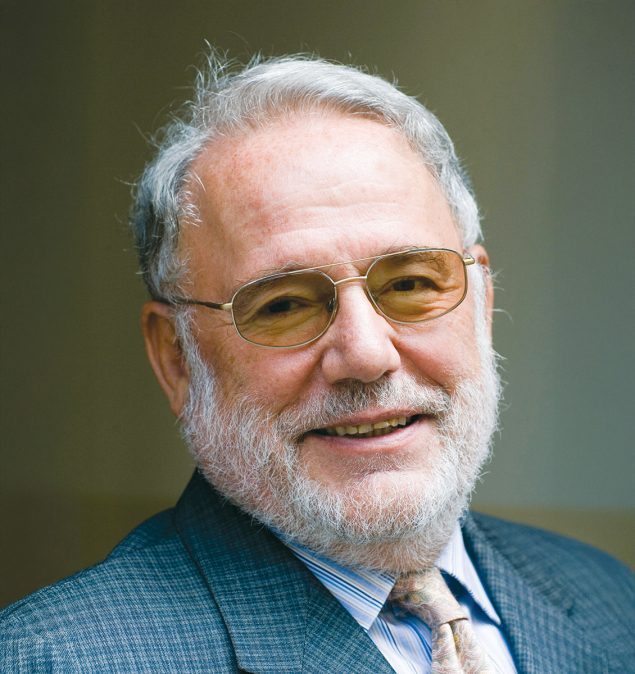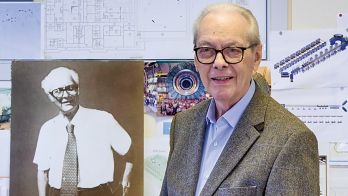
Meinhard Regler, an expert in detector development and software analysis, passed away on 22 September 2024 at the age of 83.
Born and raised in Vienna, Meinhard studied physics at the Technical University Vienna (TUW) and completed his master’s thesis on deuteron acceleration in a linac at CERN. In 1966 he joined the newly founded Institute of High Energy Physics (HEPHY) of the Austrian Academy of Sciences. He settled in Geneva to participate in a counter experiment at the CERN Proton Synchrotron, and in 1970 obtained his PhD with distinction from TUW.
In 1970 Meinhard became staff member in CERN’s data-handling division. He joined the Split Field Magnet experiment at the Intersecting Storage Rings and, together with HEPHY, contributed specially designed multi-wire proportional chambers. Early on, he realised the importance of rigorous statistical methods for track and vertex reconstruction in complex detectors, resulting in several seminal papers.
In 1975 Meinhard returned to Vienna as leader of HEPHY’s experimental division. From 1993 until his retirement at the end of 2006 he was deputy director and responsible for the detector development and software analysis groups. As a faculty member of TUW he created a series of specialised lectures and practical courses, which shaped a generation of particle physicists. In 1978 Meinhard and Georges Charpak founded the Wire Chamber Conference, now known as the Vienna Conference on Instrumentation (VCI).
Meinhard continued his participation in experiments at CERN, including WA6, UA1 and the European Hybrid Spectrometer. After joining the DELPHI experiment at LEP, he realised the emerging potential of semiconductor tracking devices and established this technology at HEPHY. First applied at DELPHI’s Very Forward Tracker, this expertise was successfully continued with important contributions to the CMS tracker at LHC, the Belle vertex detector at KEKB and several others.
Meinhard is author and co-author of several hundred scientific papers. His and his group’s contributions to track and vertex reconstruction are summarised in the standard textbook Data Analysis Techniques for High-Energy Physics, published by Cambridge University Press and translated into Russian and Chinese.
All that would suffice for a lifetime achievement, but not so for Meinhard. Inspired by the fall of the Iron Curtain, he envisaged the creation of an international centre of excellence in the Vienna region. Initially planned as a spallation neutron source, the project eventually transmuted into a facility for cancer therapy by proton and carbon-ion beams, called MedAustron. Financed by the province of Lower Austria and the hosting city of Wiener Neustadt, and with crucial scientific and engineering support from CERN and Austrian institutes, clinical treatment started in 2016.
Meinhard received several prizes and was rewarded with the highest scientific decoration of Austria
Meinhard was invited as a lecturer to many international conferences and post-graduate schools worldwide. He chaired the VCI series, organised several accelerator schools and conferences in Austria, and served on the boards of the European Physical Society’s international group on accelerators. For his tireless scientific efforts and in particular the realisation of MedAustron, Meinhard received several prizes and was rewarded with the highest scientific decoration of Austria – the Honorary Cross for Science and Arts of First Class.
He was also a co-founder and long-term president of a non-profit organisation in support of mentally handicapped people. His character was incorruptible, strictly committed to truth and honesty, and responsive to loyalty, independent thinking and constructive criticism.
In Meinhard Regler we have lost an enthusiastic scientist, visionary innovator, talented organiser, gifted teacher, great humanist and good friend. His legacy will forever stay with us.





